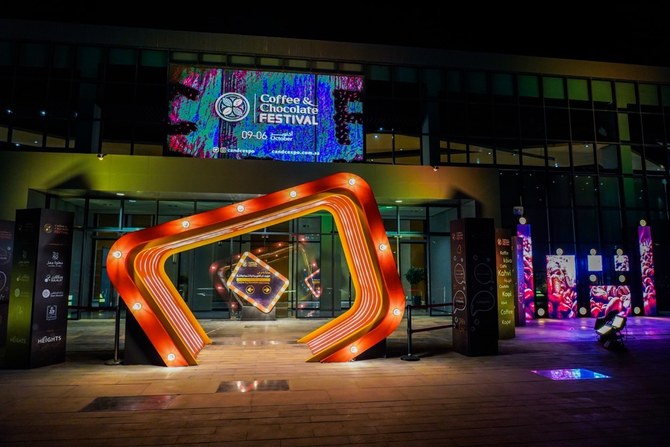DAMMAM: Robot waiters, chocolate-covered headless dancers, and coffee galore are the tasty mix on offer at a four-day Saudi festival.
The Coffee and Chocolate Festival, running at the Dhahran Expo in Dammam until Sunday, coincides with World Coffee Day and the Kingdom’s own celebration of the year of Saudi coffee.
Visitors can sample or purchase coffee and chocolate from more than 50 vendors attending the event.
Robots are on hand serving bottles of water and Arabic sweets and crowds are being entertained by headless dancers smothered in chocolate.
Mohammed Barakah, sales representative for one of the vendors edafat+, said: “We have been participating in the Coffee and Chocolate Festival every year since we launched in 2017.
“This is such an important event in our industry, and we love to educate and interact with coffee lovers in Saudi Arabia.”
Rowel Guevarra, executive chef for edafat+, prepares recipes and manages tastes with a Saudi audience in mind. He noted that the most popular flavor served in the firm’s four branches was pistachio and he told Arab News that he loved helping emerging Saudi baristas perfect their recipes.
He said: “The reason why we are joining the festival here in Saudi is to offer help for newcomers to the business.”
The brand was showcasing its array of products imported from various countries and offering visitors not only iced and hot flavored coffees but also spicy chai mixes, matcha lattes, and syrup and fruit-based drinks.
Other vendors include Doha Roasters, Camel Step, Najdiya, and Al-Noman Brothers’ Al-Shayukh Golden Coffee.
Local and international chocolate brands are also attending the event.
Rolla Ahmad, manning the Lush booth, said: “The idea is that there is seven brands of chocolate and people come and taste and then give an assessment about the chocolate.” Voting takes place via a large screen.
With a buffet-style arrangement, different types of chocolate from various local brands are available for visitors to taste, then vote upon. A winner will be announced during the festival.
A Saudi latte art championship will also take place.

Local and international chocolate brands are also attending the event. (AN photo/Huda Bashatah)
The festival aims to highlight the latest innovations and recipes in the industry while providing a platform for networking.
Traditional music and oud performances also form part of the festival attractions.
One of the performers, Joana Cruz, from Portugal, said: “This is my first time in Saudi Arabia and at this wonderful show, and I’m very pleased to be here. And I’m performing too in the exhibition.
“I’m really enjoying this country and this experience. The coffee — it’s wonderful. And the chocolates are perfect. I hope to return another year.”
Tickets can be purchased online or at the venue priced between SR35 ($9) and SR55. The expo will be next held in Riyadh from Nov. 29 until Dec. 3.


























